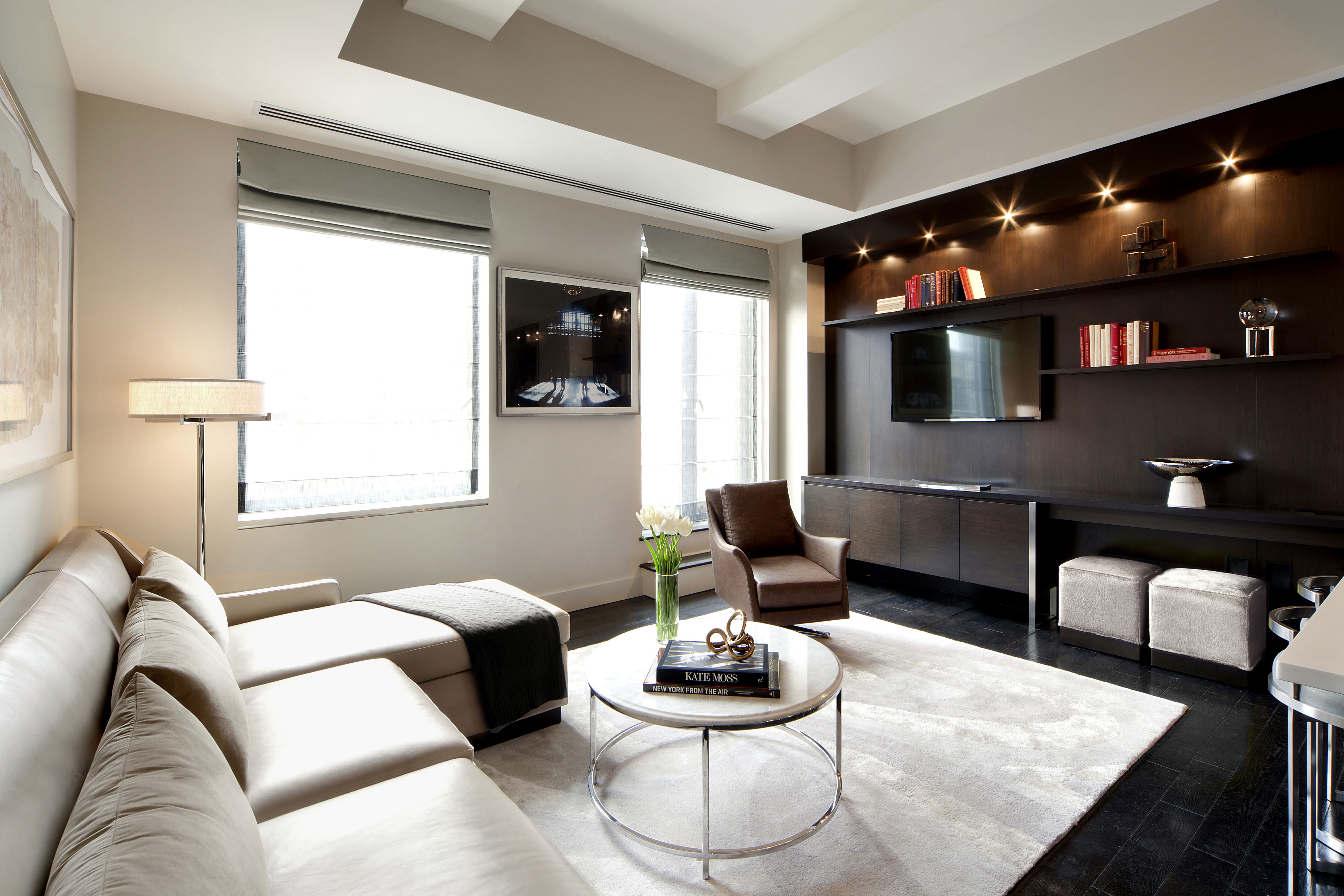Modern and Contemporary Living Room Interiors: Interiors For Living Room

Modern and contemporary living room interiors are characterized by clean lines, neutral colors, and a focus on functionality. Modern design emerged in the early 20th century as a reaction to the ornate and cluttered styles of the past. Contemporary design, on the other hand, is a more recent style that draws inspiration from both modern and traditional styles.
Design Principles of Modern and Contemporary Styles
Both modern and contemporary styles emphasize simplicity, functionality, and the use of natural materials. Modern design is typically more minimalist, with a focus on clean lines and geometric shapes. Contemporary design is more eclectic, allowing for a wider range of colors, patterns, and textures.
Key Characteristics of Modern and Contemporary Furniture, Fabrics, and Décor
Modern and contemporary furniture is typically made from simple, natural materials such as wood, metal, and glass. Fabrics are often neutral in color and have a smooth, clean texture. Décor is typically minimal, with a focus on clean lines and geometric shapes.
Examples of Modern and Contemporary Living Room Layouts
Modern and contemporary living room layouts are typically open and airy, with a focus on creating a sense of flow. Furniture is often arranged in a symmetrical or asymmetrical pattern, and there is often a clear division between the living area and the dining area.
Classic and Traditional Living Room Interiors

Classic and traditional living room interiors evoke a sense of timeless elegance and sophistication. Rooted in centuries of design heritage, these styles prioritize symmetry, balance, and the use of high-quality materials.
Defining Characteristics
- Symmetrical arrangements and balanced proportions
- Ornate details and elaborate moldings
- Use of fine woods, such as mahogany, cherry, and walnut
- Upholstery fabrics in rich colors and luxurious textures
- Traditional patterns and motifs, such as damask, floral, and striped
Furniture Styles and Materials
Classic and traditional living rooms often feature furniture with intricate carvings, curved lines, and cabriole legs. Upholstered pieces are typically covered in velvet, silk, or leather, while accent pieces may be made of wrought iron, brass, or marble.
Incorporating into Modern Homes, Interiors for living room
Classic and traditional elements can be seamlessly incorporated into modern homes to create a timeless and inviting atmosphere. Consider adding a statement chandelier, a classic sofa with rolled arms, or a traditional rug with an intricate pattern. By blending these elements with modern furniture and accessories, you can achieve a sophisticated and eclectic space.
Eclectic and Bohemian Living Room Interiors

Interiors for living room – Eclectic and bohemian living room interiors are a celebration of individuality and creativity. They blend different styles and influences to create a unique and personal living space. Eclectic living rooms are often filled with a mix of vintage and modern furniture, bold patterns, and vibrant colors. Bohemian interiors, on the other hand, tend to be more relaxed and earthy, with a focus on natural materials and ethnic influences.
If you’re looking to create an eclectic or bohemian living room, there are a few things to keep in mind. First, don’t be afraid to mix and match different styles. The key is to find a balance between the different elements so that the room feels cohesive. Second, don’t be afraid to use bold colors and patterns. Eclectic and bohemian interiors are often full of life and personality, so don’t be afraid to let your colors and patterns shine through.
Tips for Mixing Patterns, Colors, and Textures in an Eclectic Living Room
- Start with a neutral base. This will help to ground the room and make it easier to mix and match different patterns and colors.
- Choose a few key colors and patterns that you want to use throughout the room. This will help to create a sense of unity and cohesion.
- Don’t be afraid to experiment with different textures. Mixing different textures can add depth and interest to the room.
- Accessorize with unique pieces. Eclectic and bohemian interiors are often filled with unique and interesting accessories. These can add personality and character to the room.
Examples of Eclectic and Bohemian Living Room Designs
There are many different ways to create an eclectic or bohemian living room. Here are a few examples to get you started:
- A mix of vintage and modern furniture, with bold patterns and colors.
- A relaxed and earthy space with a focus on natural materials and ethnic influences.
- A room that combines elements of different cultures, such as Asian, African, and European.
Interiors for living rooms should be designed with comfort and style in mind. The furniture should be comfortable and inviting, and the décor should reflect the personality of the homeowner. For more tips on creating a beautiful and functional living room, check out this guide to house room design.
When it comes to interiors for living rooms, the possibilities are endless.
The interiors of a living room can be a reflection of one’s personality and style. To create a living room that is both stylish and comfortable, one can consider taking a masterclass interior design. This can provide the necessary knowledge and skills to transform a living room into a space that is both aesthetically pleasing and functional.